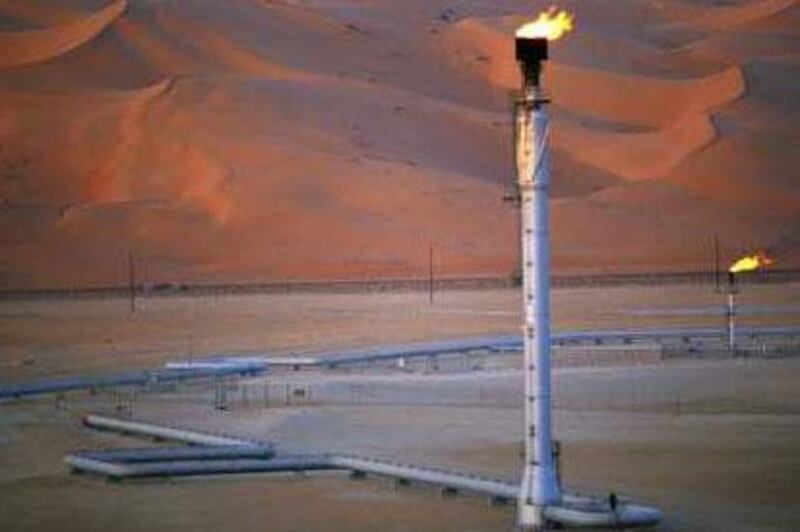A Royal Dutch Shell subsidiary yesterday announced it had produced natural gas from a new well in Saudi Arabia, but tough commercial terms in the kingdom may prevent it from developing the find, analysts say. Four teams of foreign partners searching for gas in the Rub al Khali desert have failed to announce any major discoveries in four years of drilling, representing a major setback to the country's plans to build more power stations and develop heavy industry fed by gas. South Rub Al Khali (SRAK), a joint venture between Royal Dutch Shell and Saudi Aramco, the state oil firm, said in a statement that gas flowed at its fourth well in the eastern part of the Empty Quarter, close to the UAE line of control. The new output, from a small reservoir previously discovered by Aramco, is the first that SRAK has announced in Saudi Arabia since it began drilling in 2006. Tests on two geological zones within the exploration well - widely reported to have been the most expensive onshore well in history - produced 40 million cubic feet per day (cfd) and 50 million cfd of gas respectively, SRAK said. The gas was "sour", containing 25 per cent toxic hydrogen sulphide, and produced relatively small quantities of condensates, or liquid hydrocarbons produced with gas that are crucial to the venture's profitability. Samuel Ciszuk, a Middle East energy expert at IHS Global Insight, said SRAK's announcement seemed like "a small find", but the reservoir required further evaluation. "We cannot fully know, although it does sound very doubtful whether this could ever be a commercial find," he said. SRAK did not comment on whether the find was commercially viable. The foreign partners looking for gas - including Shell, Sinopec of China, Eni of Italy, Repsol of Spain and the Russian firm Lukoil - are bound by challenging commercial terms. Lukoil's joint venture, known as Luksar, said it had made two discoveries in its tract of the Rub al Khali that it would develop, but analysts and industry executives have cast doubt on the company's claim, suggesting it was driven more by political considerations than economics. Luksar has not offered further details about the discoveries. Saudi Aramco will pay only up to US$0.75 (Dh2.75) per million British thermal units for gas produced by the companies, which represents a steep discount to market prices. For a discovery in the desert to prove commercially viable, it needs to include a large share of condensates, which the companies can market at international rates, and have a relatively low proportion of hydrogen sulphide, which is expensive to process. Patrick Allman-Ward, the former chief executive of SRAK, told a gas trade publication in May 2005 that for a discovery in the Rub al Khali to be commercially viable it would need to yield between 500 million and 1 billion cfd of gas, and between 80,000 and 100,000 barrels per day (bpd) of condensate. SRAK's discovery announced yesterday would yield between 400 bpd and 1,250 bpd of condensate per day in the two zones that were tested. The firm plans to drill three more wells in the kingdom this year and next. Gas deposits in much of Saudi Arabia are layered on top of one another, like a cake. SRAK drilled through an existing reservoir, called Kidan, to reach a layer of gas known as the Arab reservoir, where the gas flow was tested. Deeper drilling to the Khuff, which lies much further underground, was scuttled, SRAK said. "Evaluation of the Khuff reservoirs in this well showed that it was not hydrocarbon bearing, and the deep section of the well was therefore abandoned," the company said. cstanton@thenational.ae
Shell's long hunt yields Saudi gas
Region A Royal Dutch Shell subsidiary in a five-year hunt for natural gas in Saudi Arabia announced today it has finally made a discovery.

More from the national




